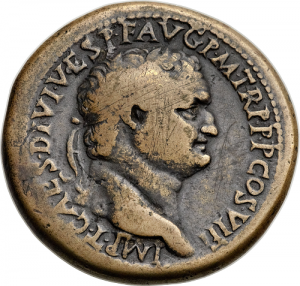Day of Divine judgment. There were multiple Days of the Lord in the OT (see my post #90). Thus the Day of Christ was His revenge and divine judgment on Apostate Israel in 70 AD. He kept His promise.
It was likely either 30 or 33 AD depending on which calendar we are using. After the Cross, Christ descended to Hades, as all who died at the time did. Those in Hades were not just physically dead but spiritually dead as well. To be spiritually dead = absent from the Lord God. Christ ministered to the dead in Hades. Death and Hades are often used as synonyms or at least found together (Rev 20:13, 14, 1 Cor 15:55). Thus when Christ was resurrected from the dead, He literally rose from those who were dead in Hades. Christ was the firstfruits of the resurrection meaning He was the first to leave Hades. In this way, Christ defeated Death. He returned to His body as proof of this resurrection and appeared to many. This was entirely necessary. His body bore the wounds of the Cross yet He was a spiritual being at the same time. A spiritual being in our physical realm is quite different than a spiritual being in the spiritual realm but this is too long a topic to cover here.
And he didn't. Paul wrote his two letters to the Thessalonians around 51-52 AD.
When Vespasian was declared Caesar in December of 69 AD his two sons (Titus and Domitian) were named Caesar at the same time. Many people don't know this. They took the same name,
Titus Flavius Vespasianus. This was done because Rome had just endured a brutal year long civil war which started largely because Nero did not name a successor. Thus we had three emperors who died trying to gain control of the empire in what would become know as the Year of the Four Emperors, Vespasian being the fourth. To avoid this from happening again, Vespasian's successors were named.
I don't typically like the name "AntiChrist" being used but in the case of Vespasian, Titus and Domitian, it fits. They were an unholy Trinity, mirror opposites of Father, Son and HS. Vespasian was truly "OF SATAN" as much as Judas was. Thus Titus being referred to as "the Son of Perdition" makes perfect sense. Vespasian declared war on God's people, not just the Jews but also the Christians as he considered them all sons of David. He ordered all descendants of David to be sought out and killed. It's unclear how successful he was in this effort.
Back to Titus and his moment at the temple as it was burning. Josephus says that Titus entered the Holy of Holies with his generals in A.D. 70. Shortly thereafter, Titus was worshiped at the Temple in A.D. 70 as was customary of someone declared imperator in fulfillment of 2 Thessalonians 2:4: “He sets Himself up in God’s Temple displaying himself as a god.” Josephus writes, “And now the Romans . . . brought their ensigns to the temple and set them over against its eastern gate; and there did they offer sacrifices to them, and there did they make Titus imperator.” A metallic image of Vespasian and Titus was also worshiped at that time. The image of Vespasian and Titus was found on the ensign called the numina legionum which was a large coin-shaped bust or image of the emperor and his favorites (i.e. Titus) held aloft on a pole.
In the first century, the Caesars were worshipped in Rome’s eastern provinces in the imperial cult as a god. Recall that Titus was given the title “Caesar” in A.D. 69 at Vespasian’s coronation. And when the Romans broke into the Temple, Suetonius says that Titus’ army wanted to make him emperor.
4 Since the time of Augustus, the Roman emperor was Pontifex Maximus or high priest of Roman religious life. Furthermore, Titus’ army was drawn from the eastern provinces where emperor worship was a day-to-day occurrence and officially sanctioned in the Imperial Cult in Rome at the time. Thus Caesar Titus was his army’s general, perceived emperor and Pontifex Maximus. And as Pontifex Maximus or high priest in the presence of his army drawn from the east where emperor worship was officially sanctioned, Titus was expected to both direct and receive divine worship while the Romans worshiped the images of himself and Vespasian on the ensigns in the Temple on the 9th of Av of A.D. 70.
Titus Flavius Vespasianus is called
the man of lawlessness because he permanently put an end to the practice of the Law by destroying the Jewish Temple in A.D. 70 thereby making it impossible to fully follow the customs of the Law of Moses.
How could Titus be the Lawless One if he did not die at the fall of Jerusalem in A.D. 70? Of all the other possible first-century candidates for the Lawless One–Nero, Simon, John, Eleazar ben Jair, and Eleazar ben Simon–none of these people are known to have died at the fall of Jerusalem in A.D. 70. 2 Thessalonians 2:8 never says the Lawless One would die at the coming of Christ in A.D. 70. This verse literally reads, “And then the Lawless One will be revealed, whom the Lord Jesus will TAKE AWAY with the Breath of His Mouth and DO AWAY WITH by the Splendor of His Coming.” Titus was done away with and taken away in A.D. 70 since he left Jerusalem and returned to Rome immediately after the city fell in A.D. 70.
It's uncanny how everything fits.

